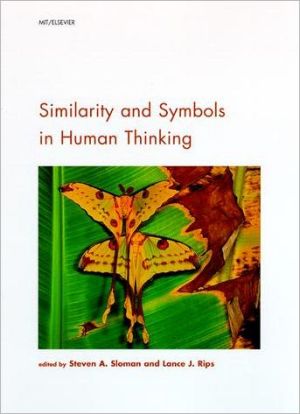

 |

|

The average rating for Similarity and Symbols in Human Thinking based on 2 reviews is 3 stars.
Review # 1 was written on 2012-04-06 00:00:00 Carol Strapp Carol StrappCore Syntax by David Adger is an interesting book, especially, for those who lack a solid background in syntax theory. It is based on the minimalist approach that is proposed by Noam Chomsky. There are three basic notions on which the author based his Core Syntax: theory, analysis, and data. Therefore, he presents these three significant elements lucidly throughout his textbook. This textbook has ten chapters. In the first chapter, the author introduces some main concepts of linguistics. Then, in the second chapter, he discusses the requirement of feature checking on the basis of the notions of interpretable and uninterpretable. The third chapter includes the semantic aspect and its role in syntax. The fourth chapter has introduced three main areas: the structure of phrases, the significance of c-command, ditransitivity, and the syntactic architecture of the system. In the fifth chapter, the author provides theories of functional categories and describes empirically how they represent basic units of sentences; he includes examples from other languages, mainly French and German. Also, this chapter has covered such areas as head-movement and do-support. In chapter six, the author shows how almost the same theories can be applied to noun phrases which comprise primarily subjects and objects. Again, in chapter seven the author argues that functional categories are significant in relation to subjects and objects. However, the main focus is on the determiner phrase (DP), while chapter 8 is reserved for the complementizer phrases (CP). Approaching the end of the textbook, the notion of wh-movement is discussed in chapter 9. Finally, in chapter 10, the author concludes with the subject of locality and phases or islands. All in all, this textbook is recommended for students who do not have a deep background in syntax. I find some exercises confusing because some of them have a number of typos. |
Review # 2 was written on 2013-05-09 00:00:00 Brian Cunningham Brian CunninghamThis book was taught to me in my undergraduate linguistics class and as far as my interest in syntax goes it was way to much to even comprehend. I can only tell from my experience but it is definitely not suited for beginners in this field of studies. There are a lot of examples from sometimes rather exotic languages and the variety of contradictions was confusing. At least it contains summaries of every chapter to convey the general ideas. If studied in detail and with due diligence, the book can really give an extensive amount of information about the minimalist approach. |
CAN'T FIND WHAT YOU'RE LOOKING FOR? CLICK HERE!!!